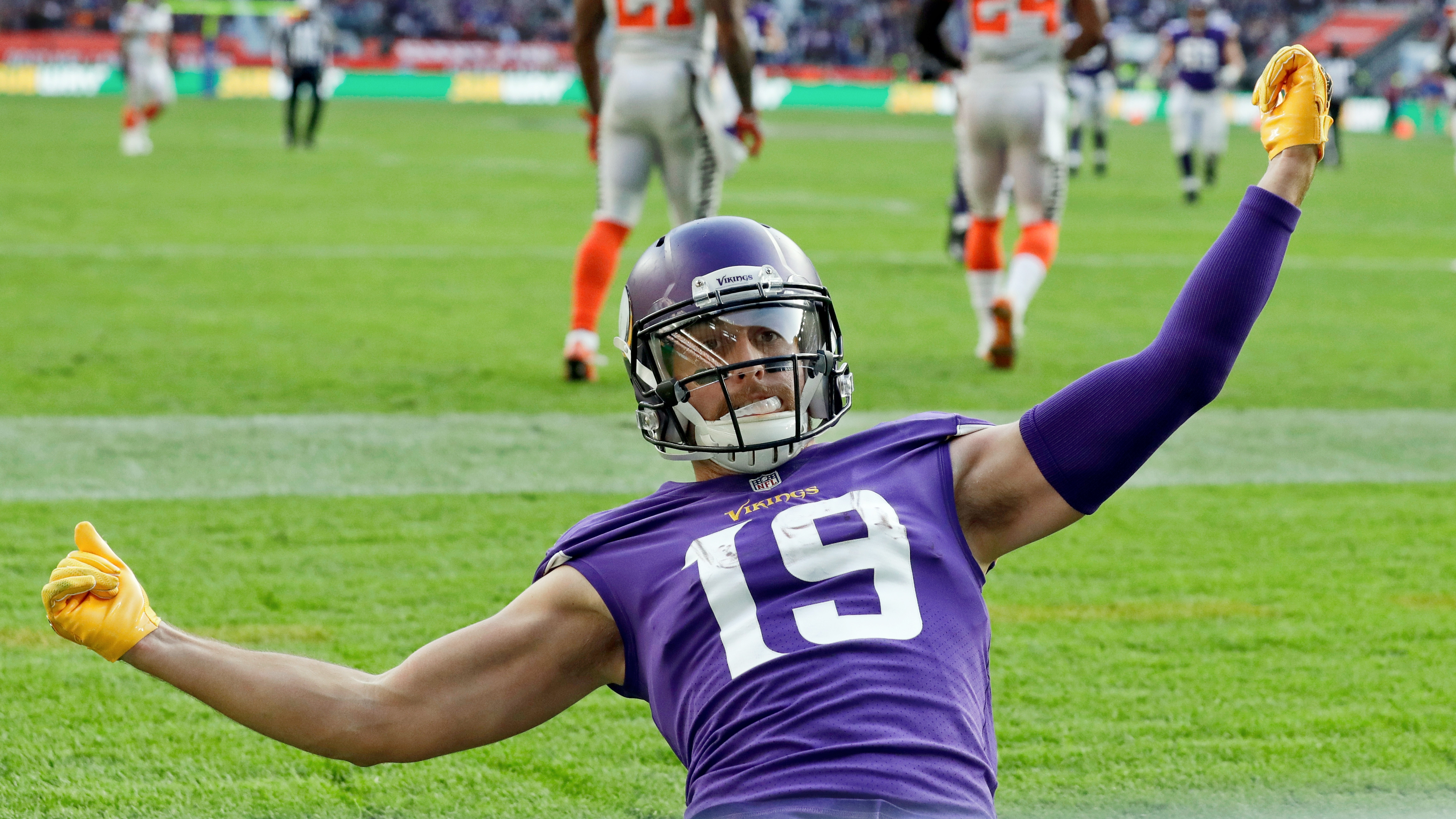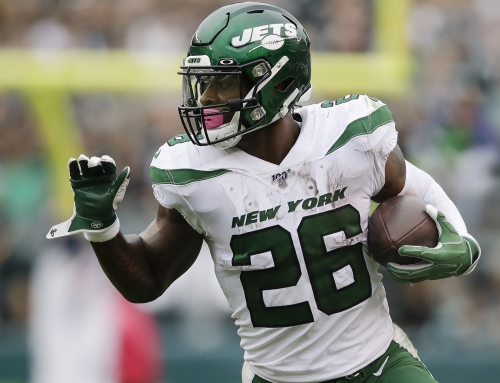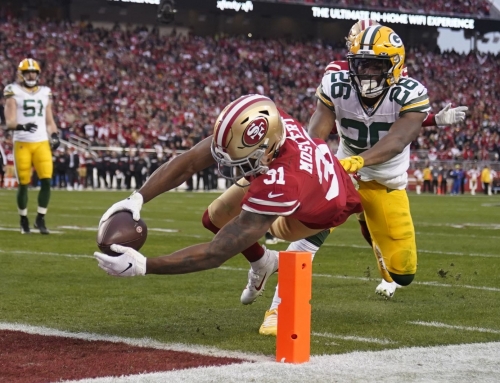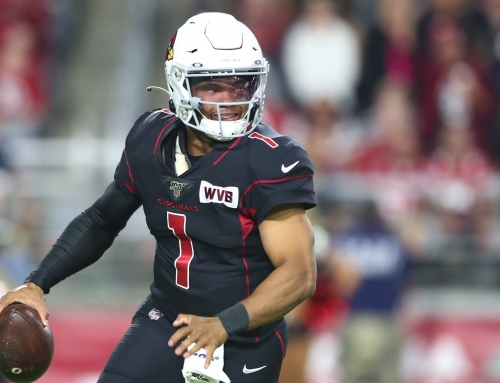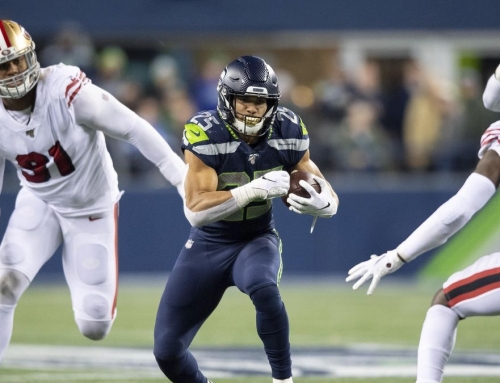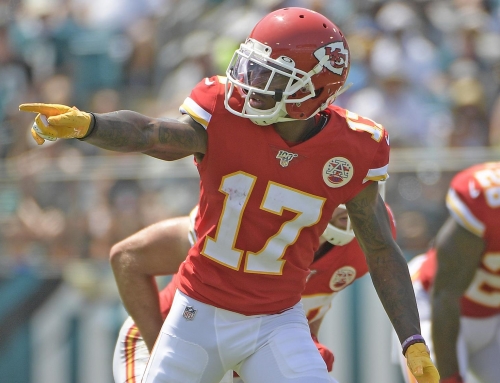Understanding and projecting player value is a key factor in dynasty fantasy football. Keeping ahead of a player’s constantly fluctuating value, whether the shift is positive or negative, can promote rapid team improvement and success. Included below are the biggest risers and fallers in Dynasty Trade Value (DTV) over the 2017 NFL season at the wide receiver position. Additionally, it includes brief analysis on what prompted the changes in value, as well as some brief thoughts on what to expect from each wide receiver moving forward. Unless otherwise specified, all Dynasty Trade Values are based on a 12-team PPR league.
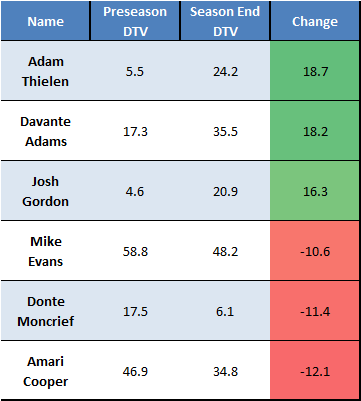
Adam Thielen entered the 2017 NFL season as the Minnesota Vikings’ WR2 behind Stefon Diggs. Diggs had the hype and the expectation. Minnesota also still had reliable tight end target Kyle Rudolph along with new weapon Dalvin Cook to use in the passing game. Thielen’s preseason DTV of 5.5 is equal to the 2.03 rookie draft pick which was a very affordable price in hindsight. Diggs battled injury in 2017, while Thielen suited up every game and became the focal point of the Vikings’ pass offense, increasing his targets by 51 from 2016. Thielen and Diggs now sit within one point in value from one another: 24.2 to 24.8, respectively. The quarterback situation in Minnesota is unclear, but Thielen has worked his way into being a consistent starting wide receiver for your fantasy team. He is three years older than Diggs and may be approaching peak value.
Davante Adams entered the 2017 NFL season as the Green Bay Packers’ WR2 behind Jordy Nelson. Randall Cobb was still around to also take up targets, and Ty Montgomery was going to see the field much more after shifting to the starting running back spot. Even with Aaron Rodgers throwing the ball often, the targets required sharing. When Rodgers became injured and was replaced by Brett Hundley, the target share became even lower. Although, that target share with Hundley under center shifted in favor of Adams instead of Nelson. Nelson’s targets fell from 152 in 2016 to 88 in 2017, while Adams’ targets remained relatively consistent, from 121 to 118. The transition to Adams as the Packers WR1 has taken place. Adams has a fresh four-year contract with the Packers, while Nelson and Cobb could become salary cap casualties. Adams is entering the prime of his career and will be paired with an elite quarterback.
Josh Gordon had a preseason value based solely on hope. Gordon had not played in the NFL since 2014, sitting out years for a drug suspension. Before the 2017 NFL season, it was unclear if Gordon would ever see the field again. But on November 1st he was reinstated. Immediately, the receiver that averaged 22.5 PPR points per game in 2014 was viewed as the Browns number one receiving option. Through five games to end the 2017 season, Gordon saw 43 targets, catching 18 of them for 335 yards and a touchdown. Cleveland was the worst in the NFL in completion percentage in 2017, but the Browns quarterback situation should change this year. Any consistency from the quarterback position will lead to the 26-year-old Gordon’s value rising further.
Mike Evans entered the 2017 NFL season for many as the overall top dynasty asset, or for other’s, trailing only Odell Beckham Jr. Evans was coming off a 2016 season that saw him targeted 171 times. He had become the favorite target of Jameis Winston, who himself was also expected to take a step to the next level. Unfortunately, each player disappointed, as did the entire Buccaneers franchise. Evans’ targets fell to 136, and he saw a large decrease in yards (1,321 to 1,001) and touchdowns (12 to 5). Evans’ DTV has fallen behind that of DeAndre Hopkins, Beckham Jr., and Antonio Brown, but the talent is still there. Tampa Bay’s quarterback situation is defined and Evans, at 24-years-old, remains a valuable wide receiver who could easily find his way to the top of the DTV chart again if his targets increase and the touchdown production returns.
Donte Moncrief entered the NFL season with high expectations. During the preseason, the Indianapolis Colts were claiming that the return of Andrew Luck would be imminent. When he was healthy in 2016, Moncrief proved to be a reliable red zone weapon for Luck, scoring seven touchdowns in nine games. 2017 was going to be the year that the Colts offense went to the next level and Moncrief would be targeted all over the field, and Luck would ascend to the game’s premier quarterback, but that didn’t happen. Luck never saw the field and Moncrief rarely saw targets. Moncrief had the worst season of his career as a result of battling injury for the second consecutive year and the Colts offense sputtering without Luck at the helm. Moncrief is a free agent and is likely to sign a “prove it” deal that many oft-injured receivers have to sign. Indianapolis needs receivers, so he could remain there and stay paired with Luck, but the determining factor in a DTV rebound will be his health. To reach his potential, Moncrief will need to be healthy and paired with a stable quarterback situation that utilizes him all over the field.
Amari Cooper broke the 1,000-yard receiving mark in each of his first two seasons and was entering his third season at only 23 years old. Having produced at a young age in his first two seasons, he was the dynasty dream. But that dream quickly turned into a nightmare. Week 1 started out fine with Cooper logging five receptions for 62 yards and a touchdown, good for 17.2 PPR points. Although, over the next five weeks, Cooper averaged only 4.82 PPR points per game failed to break three PPR points in three of those weeks. This cold streak likely cost you a fantasy matchup or two and resulted in Cooper ending up on your bench just in time for the Raiders to make him the focal point in the game against Kansas City. Derek Carr targeted Cooper 19 times that game resulting in an 11/210/2 line for 44 PPR points. Regardless, Cooper was back! Or so we thought. While he remained startable, averaging about 10 PPR points per game over the following four games, he was still not putting up WR1 numbers. Then, in Week 14, the first week of fantasy playoffs for many, Cooper put up zero. That kind of clunker in the fantasy playoffs leaves an impression on fantasy owners. Now, Michael Crabtree will not be returning to the Raiders so Cooper will enter his age 24 season as the clear top wide receiver for a Raiders offense that features a young and talented quarterback in Carr, and a proven coach in Jon Gruden who misses the taste of victory. Ultimately, Cooper is a weapon that should be used to help continue Carr’s development, and if used properly, his production should return to that of his first two seasons.


